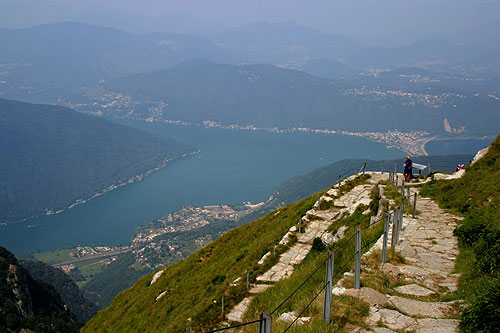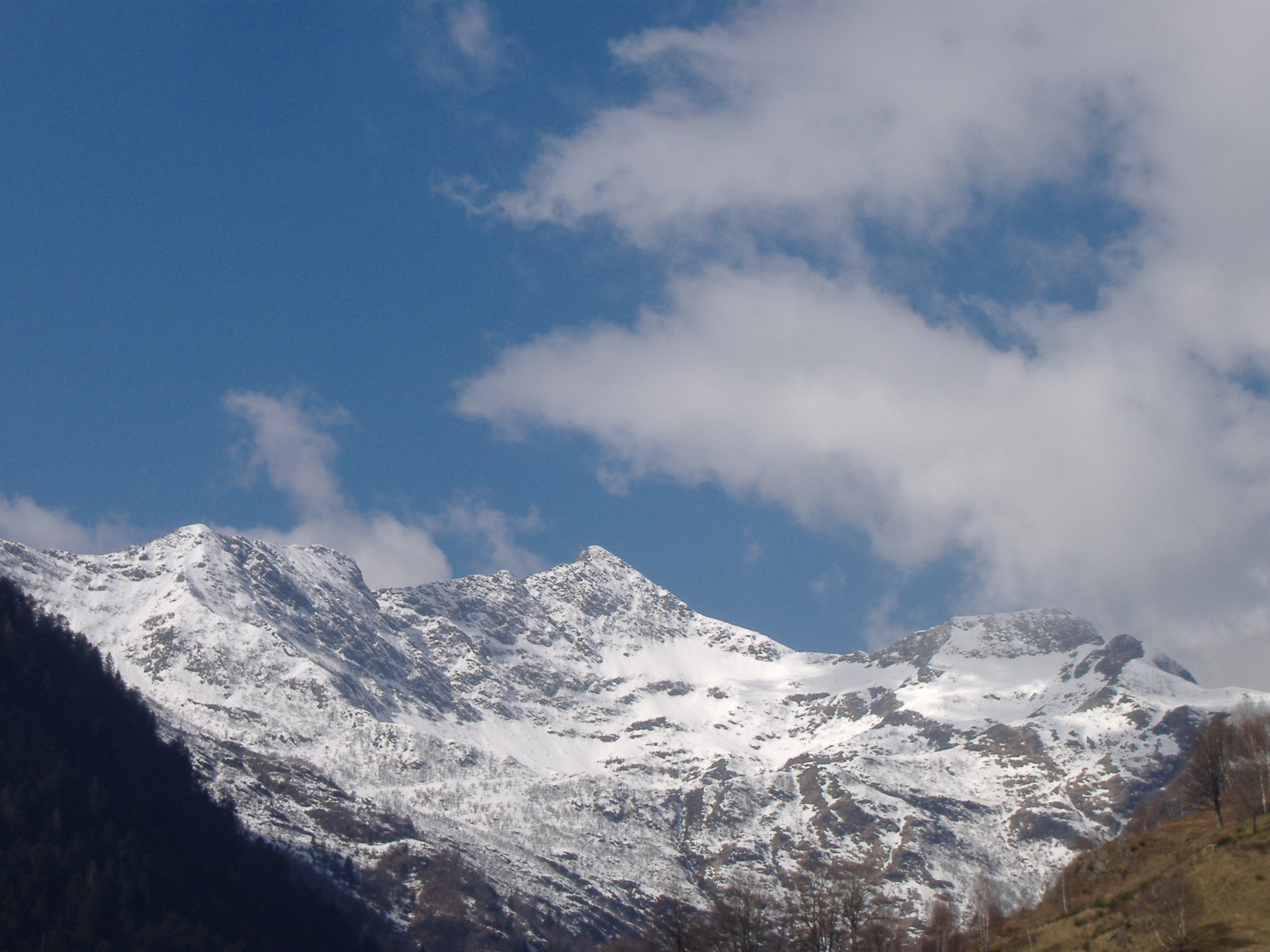|
Sasso Gordona
Sasso Gordona is a mountain of the Lugano Prealps, located west of Lake Como. It lies in the Italy, Italian region of Lombardy, just north of the Switzerland, Swiss border with the canton of Ticino. It has an elevation of 1,410 metres above sea level. The Swiss border reaches a height of 1,200 metres, below Rifugio Prabello. West of Sasso Gordona is the Rifugio Prabello, a mountain hut owned by the Italian Alpine Club. References External linksSasso Gordona on Hikr Mountains of the Alps Mountains of Lombardy Mountains partially in Switzerland {{Lombardy-geo-stub ... [...More Info...] [...Related Items...] OR: [Wikipedia] [Google] [Baidu] |
Swisstopo
Swisstopo is the official name for the Swiss Federal Office of Topography (in German language, German: ''Bundesamt für Landestopografie''; French language, French: ''Office fédéral de topographie''; Italian language, Italian: ''Ufficio federale di topografia''; Romansh language, Romansh: ''Uffizi federal da topografia''), Switzerland's national mapping agency. The current name was made official in 2002. It had been in use as the domain name for the institute's homepage, swisstopo.ch, since 1997. Maps The main class of products produced by Swisstopo are topographical maps on seven different Scale (map), scales. Swiss maps have been praised for their accuracy and quality. Regular maps * 1:25.000. This is the most detailed map, useful for many purposes. Those are popular with tourists, especially for famous areas like Zermatt and St. Moritz. These maps cost CHF 13.50 each (2004). 208 maps on this scale are published at regular intervals. The first map published on this scale ... [...More Info...] [...Related Items...] OR: [Wikipedia] [Google] [Baidu] |
Monte Generoso
Monte Generoso (also known as ''Calvagione'') is a mountain of the Lugano Prealps, located on the border between Switzerland and Italy and between Lake Lugano and Lake Como. The western and southern flanks of the mountain lie in the Swiss canton of Ticino, whilst the north-eastern flanks are in the Italian region of Lombardy.Translated from the Italian Wikipedia article ''Monte Generoso'' The view from the summit of the mountain encompasses the lakes of Lugano, Como, Varese and Maggiore. To the north are the Alps, stretching from the Matterhorn via the Jungfrau and the Saint-Gotthard Massif to the Bernina Range. To the south are the Lombardy Plains and the Po Valley, with the city of Milan and the Apennine Mountains visible on a clear day. The summit can be approached by the Monte Generoso Railway, a rack railway that starts from Capolago in Switzerland, and climbs via the western flank of the mountain. The summit station includes a panoramic terrace and buffet, a restaura ... [...More Info...] [...Related Items...] OR: [Wikipedia] [Google] [Baidu] |
Lombardy
Lombardy ( it, Lombardia, Lombard language, Lombard: ''Lombardia'' or ''Lumbardia' '') is an administrative regions of Italy, region of Italy that covers ; it is located in the northern-central part of the country and has a population of about 10 million people, constituting more than one-sixth of Italy's population. Over a fifth of the Italian gross domestic product (GDP) is produced in the region. The Lombardy region is located between the Alps mountain range and tributaries of the Po river, and includes Milan, the largest metropolitan area in the country, and among the largest in the European Union (EU). Of the fifty-eight UNESCO World Heritage Sites in Italy, eleven are in Lombardy. Virgil, Pliny the Elder, Ambrose, Gerolamo Cardano, Caravaggio, Claudio Monteverdi, Antonio Stradivari, Cesare Beccaria, Alessandro Volta and Alessandro Manzoni; and popes Pope John XXIII, John XXIII and Pope Paul VI, Paul VI originated in the area of modern-day Lombardy region. Etymology The name ... [...More Info...] [...Related Items...] OR: [Wikipedia] [Google] [Baidu] |
Italy
Italy ( it, Italia ), officially the Italian Republic, ) or the Republic of Italy, is a country in Southern Europe. It is located in the middle of the Mediterranean Sea, and its territory largely coincides with the homonymous geographical region. Italy is also considered part of Western Europe, and shares land borders with France, Switzerland, Austria, Slovenia and the enclaved microstates of Vatican City and San Marino. It has a territorial exclave in Switzerland, Campione. Italy covers an area of , with a population of over 60 million. It is the third-most populous member state of the European Union, the sixth-most populous country in Europe, and the tenth-largest country in the continent by land area. Italy's capital and largest city is Rome. Italy was the native place of many civilizations such as the Italic peoples and the Etruscans, while due to its central geographic location in Southern Europe and the Mediterranean, the country has also historically been home ... [...More Info...] [...Related Items...] OR: [Wikipedia] [Google] [Baidu] |
Switzerland
). Swiss law does not designate a ''capital'' as such, but the federal parliament and government are installed in Bern, while other federal institutions, such as the federal courts, are in other cities (Bellinzona, Lausanne, Luzern, Neuchâtel, St. Gallen a.o.). , coordinates = , largest_city = Zürich , official_languages = , englishmotto = "One for all, all for one" , religion_year = 2020 , religion_ref = , religion = , demonym = , german: Schweizer/Schweizerin, french: Suisse/Suissesse, it, svizzero/svizzera or , rm, Svizzer/Svizra , government_type = Federalism, Federal assembly-independent Directorial system, directorial republic with elements of a direct democracy , leader_title1 = Federal Council (Switzerland), Federal Council , leader_name1 = , leader_title2 = , leader_name2 = Walter Thurnherr , legislature = Fe ... [...More Info...] [...Related Items...] OR: [Wikipedia] [Google] [Baidu] |
Lugano Prealps
The Lugano Prealps (''Prealpi Luganesi'' or ''Prealpi Lombarde Occidentali'' in Italian) are a mountain range in the western part of the Alps. They are located in Canton Ticino (southern Switzerland) and in Lombardy (northern Italy). Geography Administratively the Italian part of the range belongs to the provinces of Como and Varese, while the Swiss one is divided between the districts of Bellinzona, Locarno, Lugano and Mendrisio. The western slopes of the mountains are drained by the Ticino River, the eastern ones by Adda and the southern-central part of them by Lambro, Olona and other minor rivers and streams, all of them directly or indirectly tributaries of the Po. SOIUSA classification According to SOIUSA (''International Standardized Mountain Subdivision of the Alps'') the mountain range is an Alpine section, classified in the following way: * main part = Western Alps * major sector = North Western Alps * section = Lugano Prealps * code = I/B-11 Borders Lugano Prealps' ... [...More Info...] [...Related Items...] OR: [Wikipedia] [Google] [Baidu] |
Lake Como
Lake Como ( it, Lago di Como , ; lmo, label=Western Lombard, Lagh de Còmm , ''Cómm'' or ''Cùmm'' ), also known as Lario (; after the la, Larius Lacus), is a lake of glacial origin in Lombardy, Italy. It has an area of , making it the third-largest lake in Italy, after Lake Garda and Lake Maggiore. At over deep, it is the fifth deepest lake in Europe, and the deepest outside Norway; the bottom of the lake is more than below sea level. Lake Como has been a popular retreat for aristocrats and wealthy people since Roman times, and a very popular tourist attraction with many artistic and cultural gems. It has many villas and palaces such as Villa Olmo, Villa Serbelloni, and Villa Carlotta. Many famous people have had and have homes on the shores of Lake Como. One of its particularities is its "Y" shape, which forms the " Larian Triangle", with the little town of Canzo as its capital. In 2014, ''The Huffington Post'' called it the most beautiful lake in the world for its mi ... [...More Info...] [...Related Items...] OR: [Wikipedia] [Google] [Baidu] |
Ticino
Ticino (), sometimes Tessin (), officially the Republic and Canton of Ticino or less formally the Canton of Ticino,, informally ''Canton Ticino'' ; lmo, Canton Tesin ; german: Kanton Tessin ; french: Canton du Tessin ; rm, Chantun dal Tessin . is one of the 26 cantons forming the Swiss Confederation. It is composed of eight districts and its capital city is Bellinzona. It is also traditionally divided into the Sopraceneri and the Sottoceneri, respectively north and south of Monte Ceneri. Red and blue are the colours of its flag. Ticino is the southernmost canton of Switzerland. It is one of the three large southern Alpine cantons, along with Valais and the Grisons. However, unlike all other cantons, it lies almost entirely south of the Alps, and has no natural access to the Swiss Plateau. Through the main crest of the Gotthard and adjacent mountain ranges, it borders the canton of Valais to the northwest, the canton of Uri to the north and the canton of Grisons to the northea ... [...More Info...] [...Related Items...] OR: [Wikipedia] [Google] [Baidu] |
Italian Alpine Club
The Club Alpino Italiano is the senior Italian alpine club which stages climbing competitions, operates alpine huts, marks and maintains paths, and is active in protecting the Alpine environment. It was founded in Turin in 1863 by the then finance minister, and mountaineer, Quintino Sella; together with the Swiss Alpine Club, founded in the same year, it is the second oldest Alpine Club in the world, only preceded by the British Alpine Club. After First World War and the annexation of Trento and Trieste to Italy, it absorbed the "Società degli Alpinisti Tridentini" and the "Società Alpina delle Giulie". As of December 2018, it had 322,022 members, 507 sections and 309 sub-sections; the greatest numbers of members came from Lombardy (88,057), Veneto (54,948), and Piedmont (51,396). Its most famous achievement is the 1954 Italian Karakoram expedition to K2 that made the first successful ascent of K2. The CAI operates 433 mountain huts, 224 bivouacs and 106 smaller huts and ... [...More Info...] [...Related Items...] OR: [Wikipedia] [Google] [Baidu] |
Mountains Of The Alps
This page tabulates only the most prominent mountains of the Alps, selected for having a topographic prominence of ''at least'' , and all of them exceeding in height. Although the list contains 537 summits, some significant alpine mountains are necessarily excluded for failing to meet the stringent prominence criterion. The list of these most prominent mountains is continued down to 2500 m elevation at List of prominent mountains of the Alps (2500–2999 m) and down to 2000 m elevation on List of prominent mountains of the Alps (2000–2499 m). All such mountains are located in either France, Italy, Switzerland, Liechtenstein, Austria, Germany or Slovenia, even in some lower regions. Together, these three lists include all 44 ultra-prominent peaks of the Alps, with 19 ultras over 3000m on this page. For a definitive list of all 82 the highest peaks of the Alps, as identified by the International Climbing and Mountaineering Federation (UIAA), and often referred to as the 'Alpi ... [...More Info...] [...Related Items...] OR: [Wikipedia] [Google] [Baidu] |
Mountains Of Lombardy
A mountain is an elevated portion of the Earth's crust, generally with steep sides that show significant exposed bedrock. Although definitions vary, a mountain may differ from a plateau in having a limited summit area, and is usually higher than a hill, typically rising at least 300 metres (1,000 feet) above the surrounding land. A few mountains are isolated summits, but most occur in mountain ranges. Mountains are formed through tectonic forces, erosion, or volcanism, which act on time scales of up to tens of millions of years. Once mountain building ceases, mountains are slowly leveled through the action of weathering, through slumping and other forms of mass wasting, as well as through erosion by rivers and glaciers. High elevations on mountains produce colder climates than at sea level at similar latitude. These colder climates strongly affect the ecosystems of mountains: different elevations have different plants and animals. Because of the less hospitable terrain ... [...More Info...] [...Related Items...] OR: [Wikipedia] [Google] [Baidu] |







